Ghetto in Rome
Sun Dec 03, 2017 12:01 pmFrom the 16th Century until 1870, Jews in Rome were forced to reside inside a walled Ghetto.
Historically the Jewish population in Rome is distinct from Ashkenazi and Sephardi in that they arrived prior to the Diaspora of 70 AD.
Or did they? Frankly, the more I look into the matter, the less clear I am about what the narrative should be.
Because Hebrew POWs were brought to Rome following the First Jewish-Roman War. And there were multiple Diasporas before, during, and after the Roman Empire. But I find no reason to believe that Jews did not come to Rome willingly, prior to AD 70, in greater numbers than elsewhere. Nor do I have any reason to believe that Jews in Rome are not culturally distinct from Sephardi and Ashkenazi.
(I think it is worthwhile to reflect upon these points both individually and collectively together.)
As a separate matter regarding the origin of the Ghetto, the Reconquista completed in 1492, the Protestant Reformation and Catholic counter-Reformation occurred in the 16th Century, and the ghetto system began in the 16th Century; and there is a cause-and-effect relationship connecting all these dots.
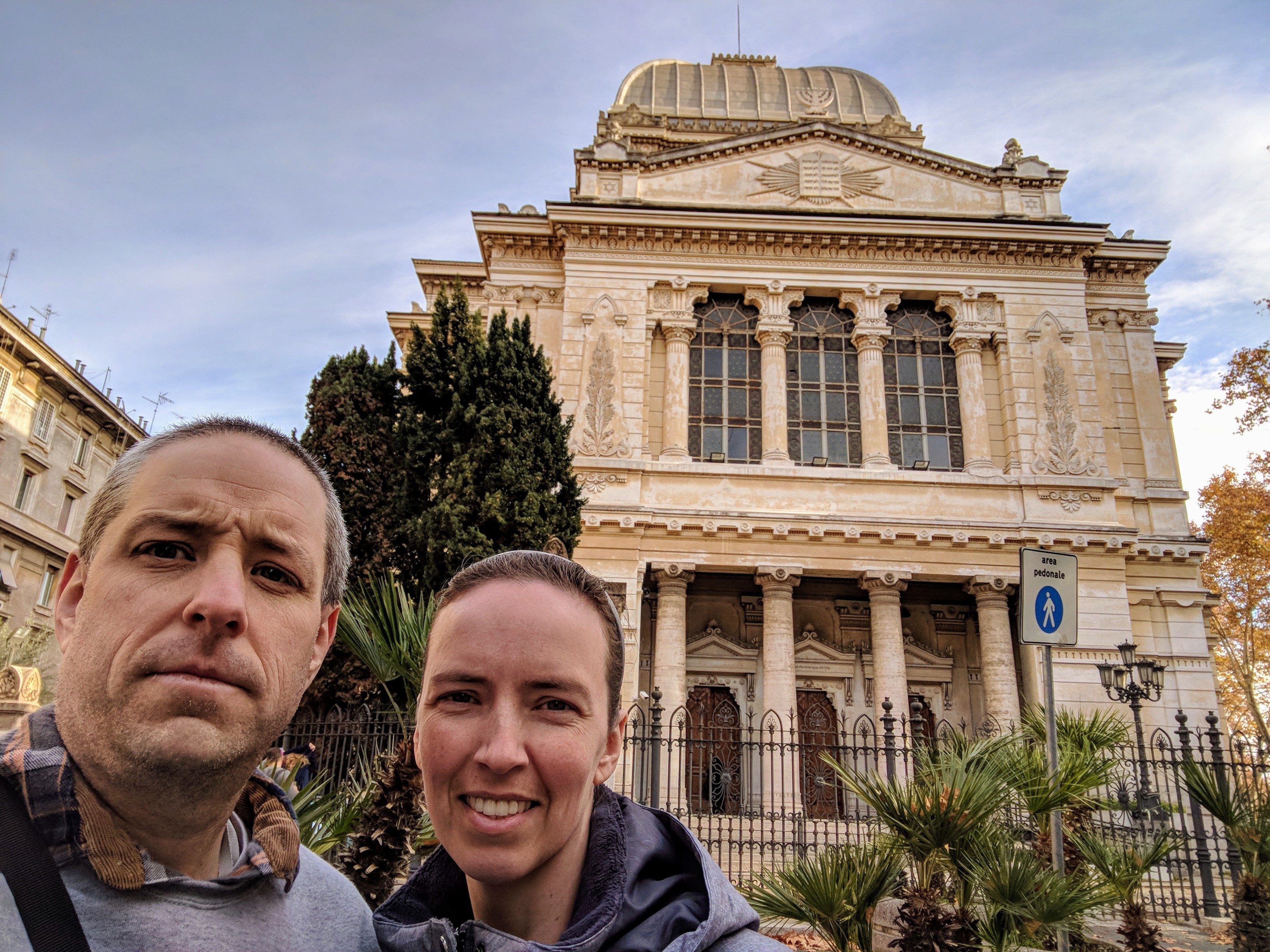
This is Art Nouveau architecture, typical of the turn of the Century, a style which attempted to remove the barrier between fine art and applied art. In my opinion the columns are Ionic.
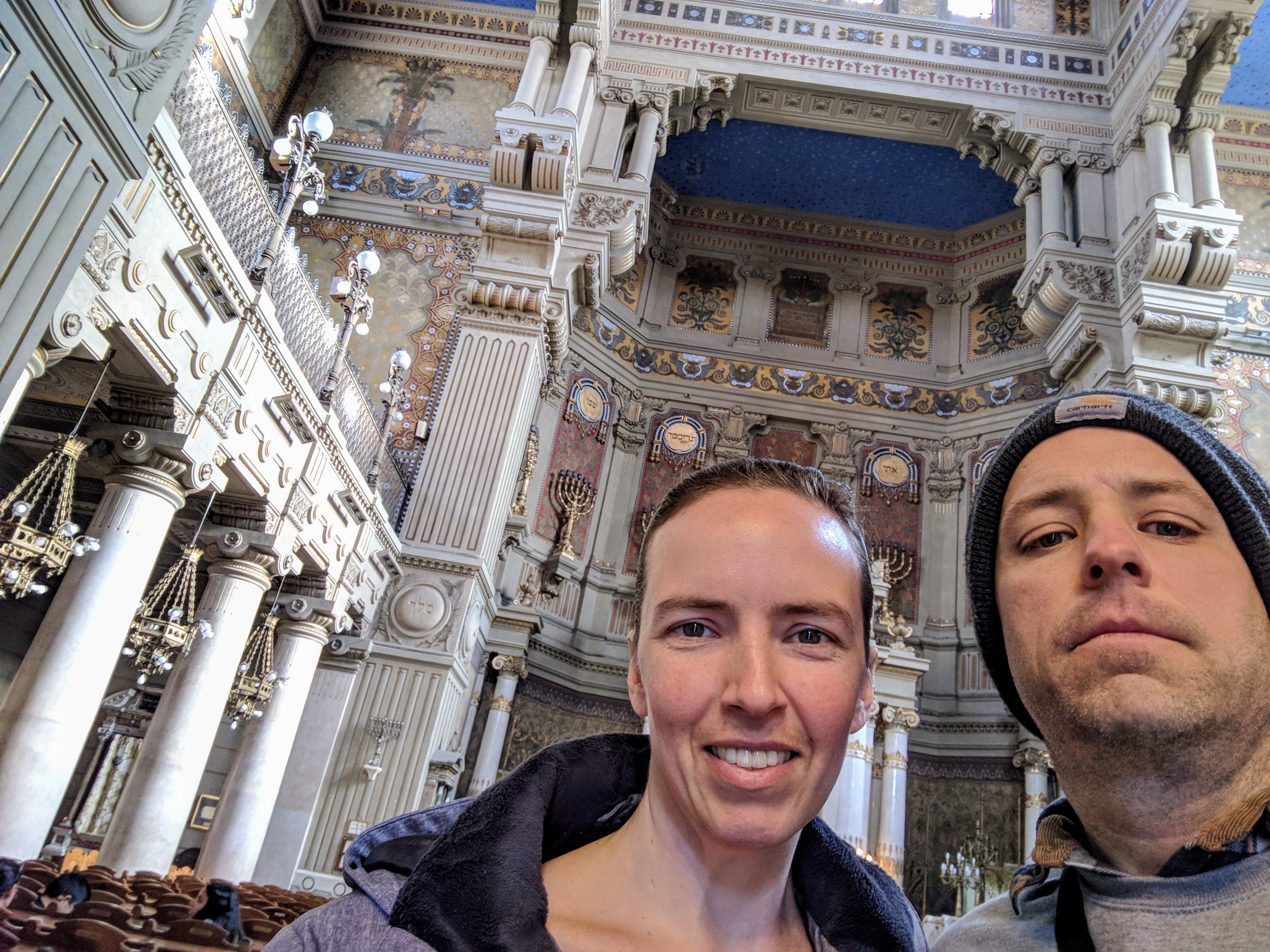
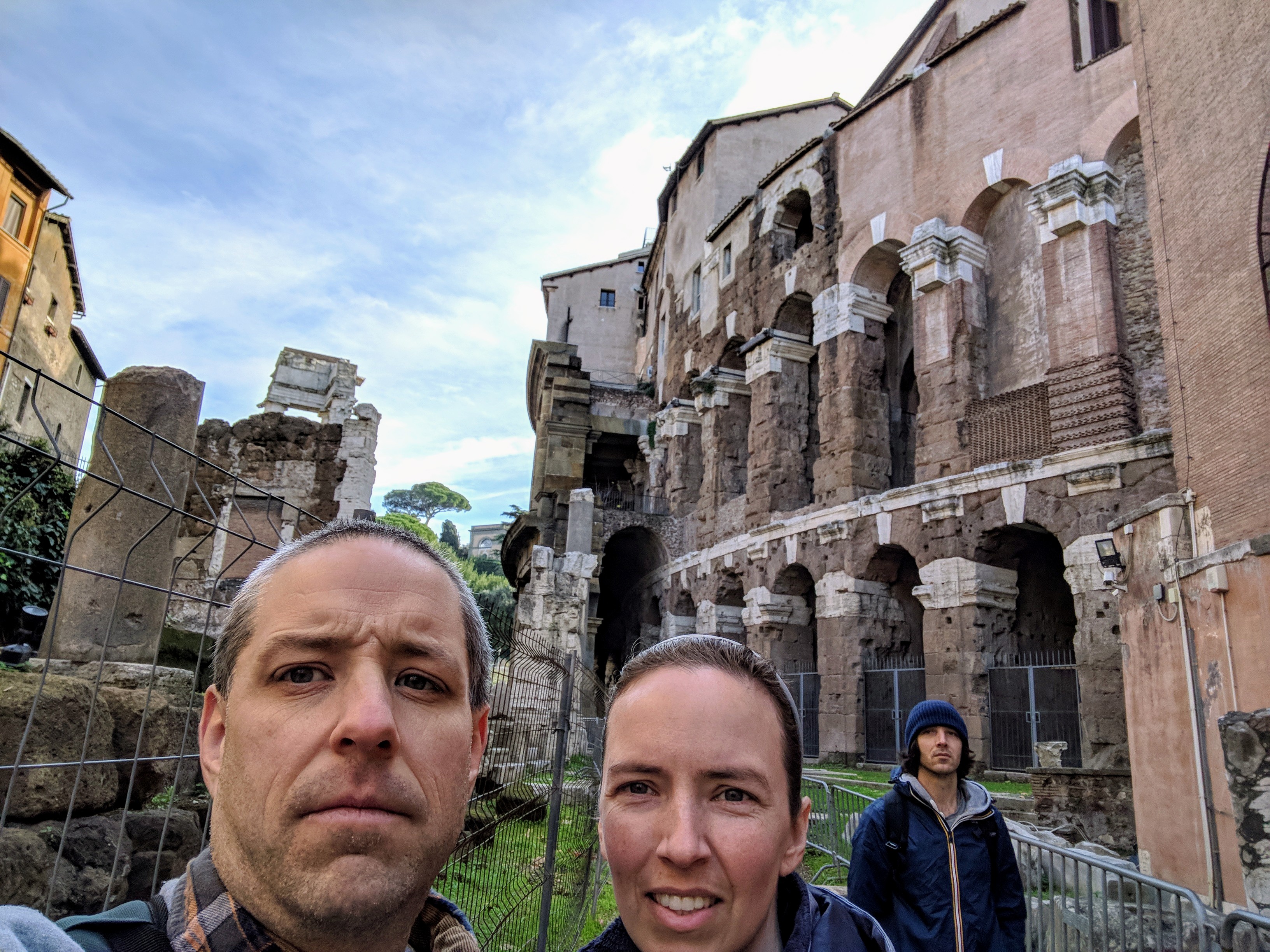
Before the Colosseum was built, there was the Theatre of Marcellus. Marcellus was the nephew of Emperor Augustus, who was by some definition the first Emperor of Rome.
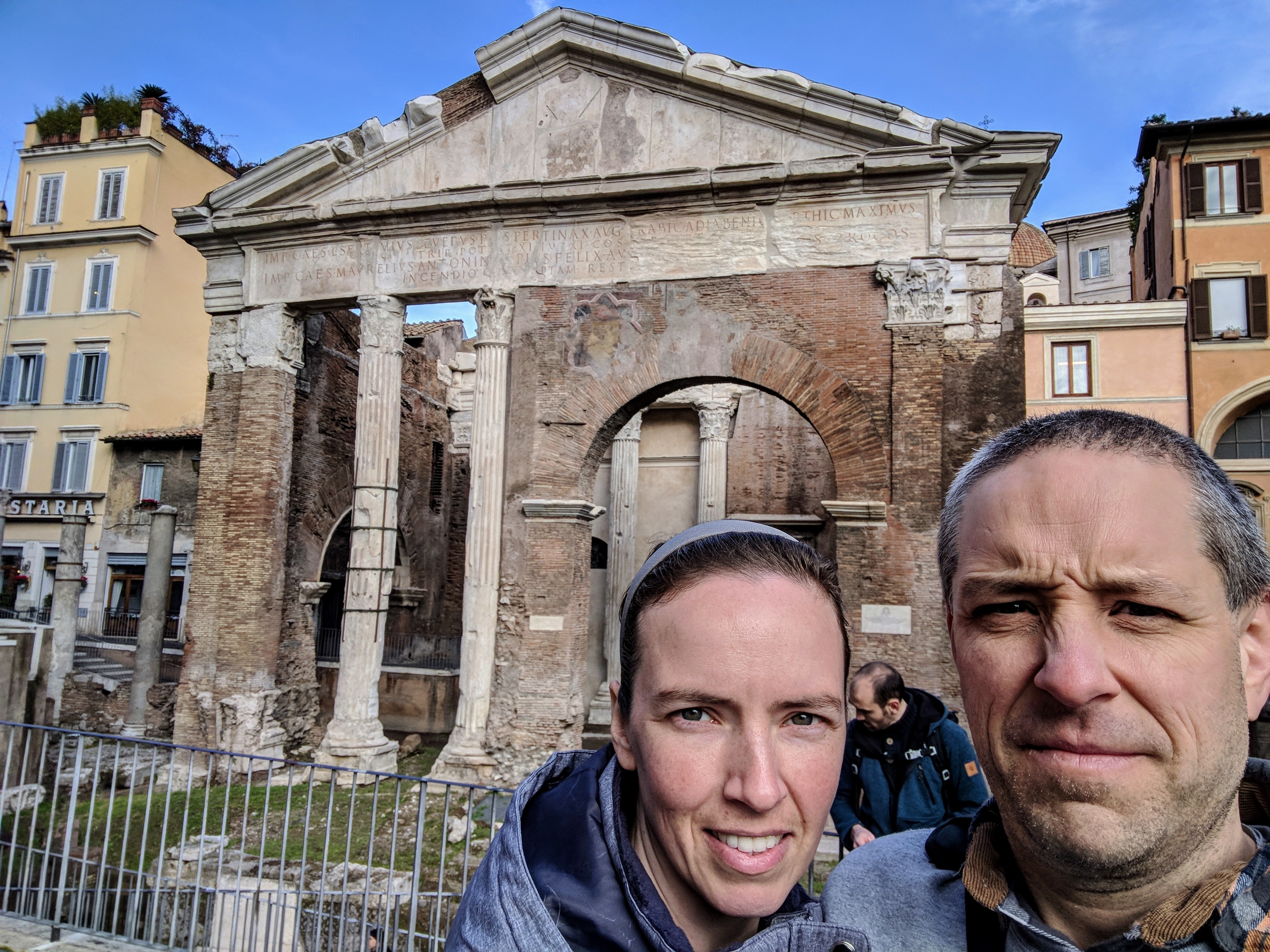
Adjacent Theatre Marcellus was a public space, where Chiesa di Sant’Angelo in Pescheria now stands, containing Temples and a library, accessed via Portico d’Ottavia, all built by Emperor Augustus in honor of his sister Octavia.
Following the assassination of Julius Caesar, Augustus cemented an alliance with Mark Antony by forcing Octavia to marry him. But alas, Mark Antony ran off with Cleopatra Queen of Egypt, fell out with Augustus, and after being defeated in the resulting Civil War, Antony and Cleopatra committed suicide in Alexandria. Such drama! Cleopatra’s surviving children were taken to Rome and raised by Octavia.
Chiesa di Sant’Angelo in Pescheria is so named because the space was also previously a fish market. Rome’s Jews were legally required to attend Christian services there.
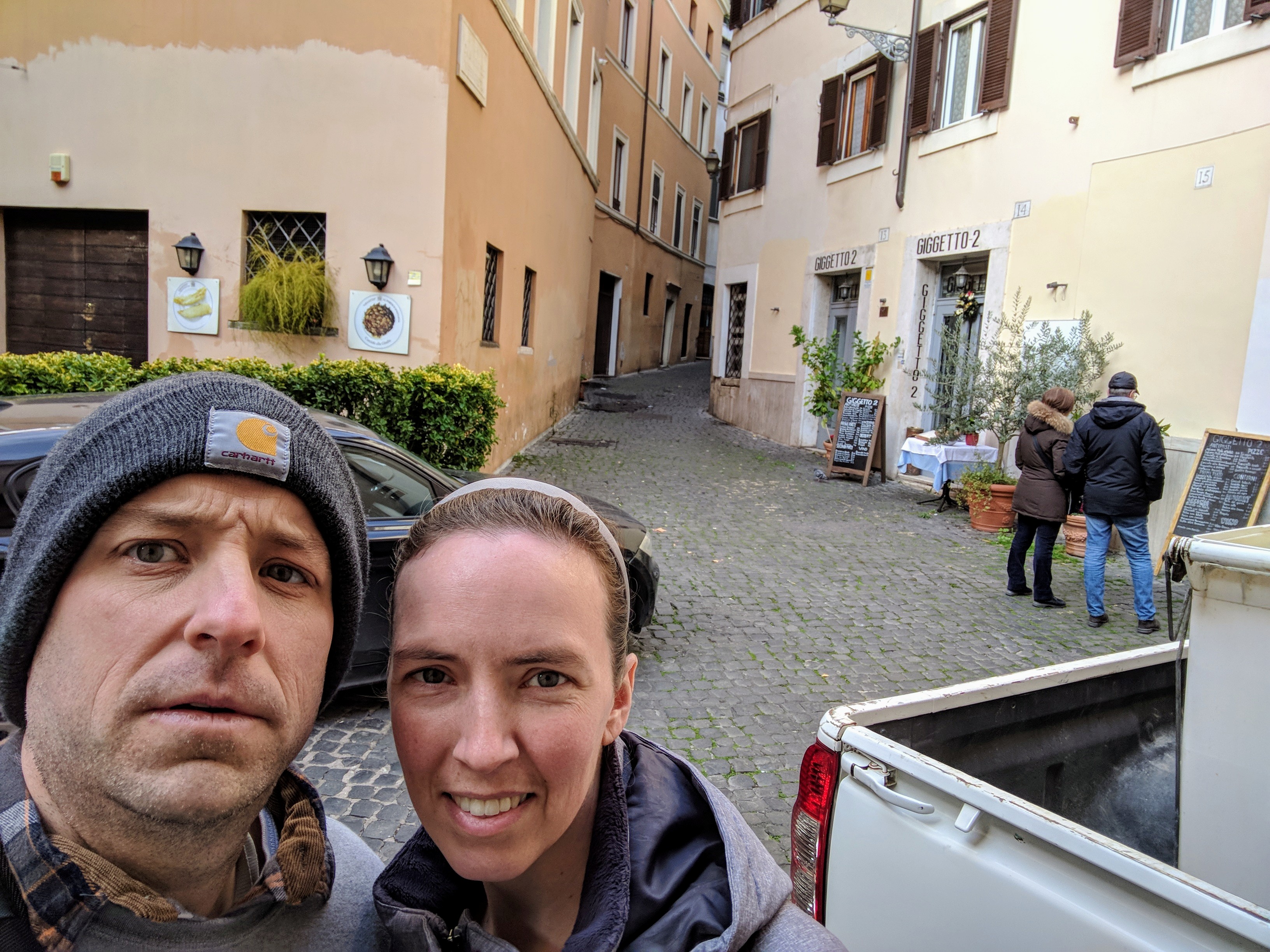
The tiny narrow street and tiny cramped houses reflect the persecution which befell Jews who were forced to live in the Ghetto.